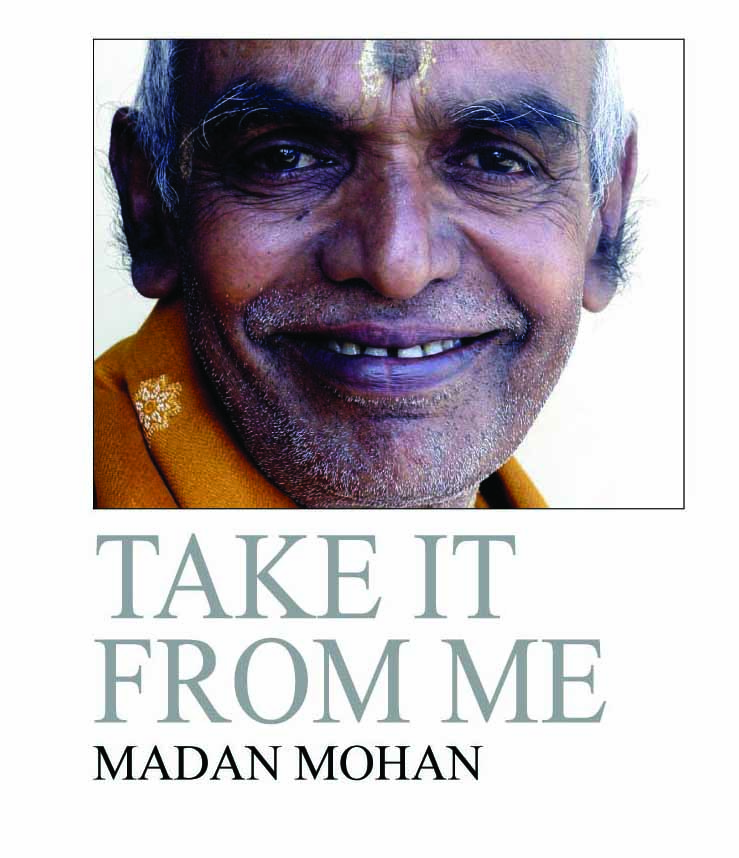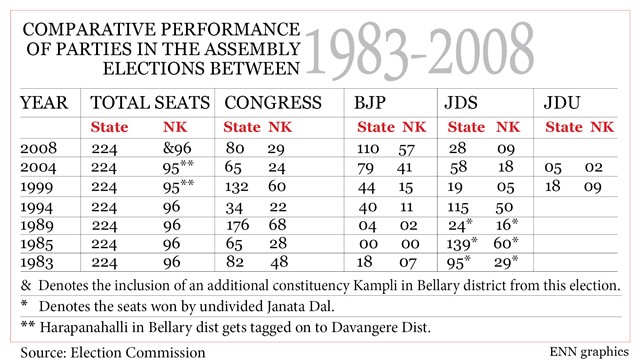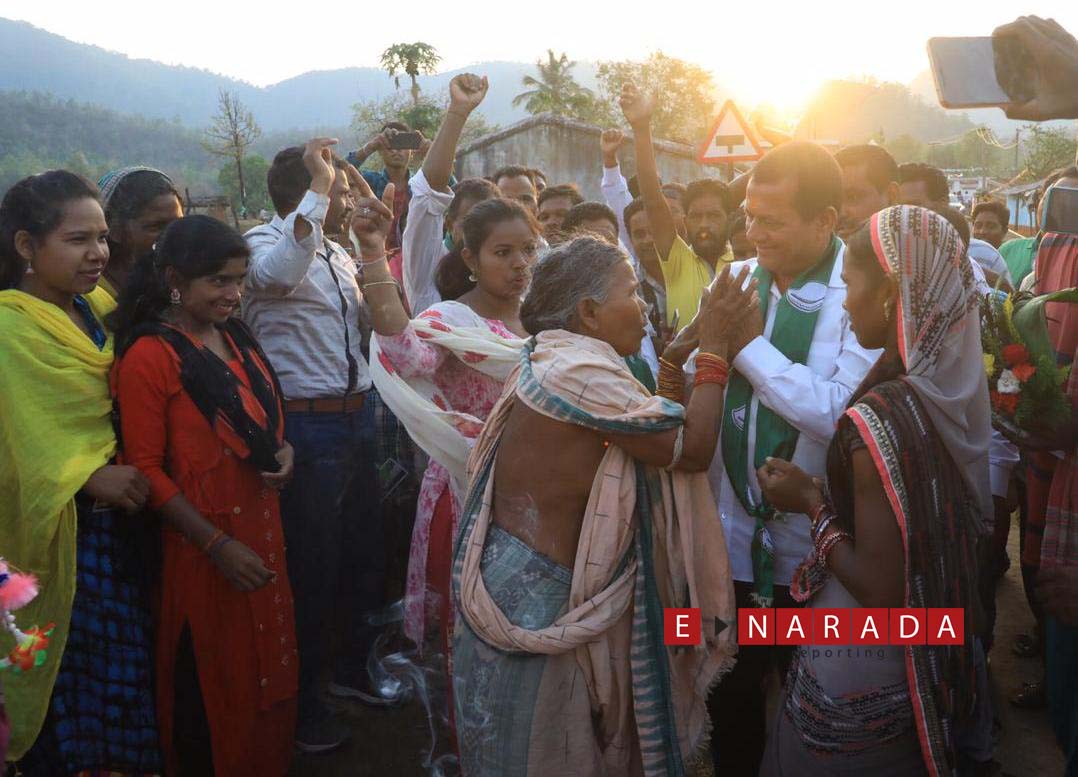 Come assembly elections. All attention is on Northern Karnataka, which has been cast in the role of a king maker in Karnataka politics, wittingly or unwittingly.
Come assembly elections. All attention is on Northern Karnataka, which has been cast in the role of a king maker in Karnataka politics, wittingly or unwittingly.
For the success or failure of any party in the present day Karnataka’s electoral politics especially for the past quarter century, depends on whether he has got a mandate from the region. Which ever party wins half or more than half of the seats from the region, finds him catapulted to the third floor of Vidhana Soudha to ensconce itself in the seat of power. The northern region comprising of the twelve districts of Bombay Karnataka, the Hyderabad Karnataka and the district of Bellary accounts of a total of 96 seats in the 224 member Karnataka Legislative Assembly.
This is not by any means a freak political phenomenon confined to any particular election. But it has been happening right through since the formation of the new state of Karnataka six decades ago. It went practically unnoticed for the first twenty-five years, when Congress ruled the root with hardly any opposition in sight to challenge its political hegemony.
It has started manifesting itself clearly when the political hegemony was broken for the first time in 1983, resulting in Non Congress government headed by Ramakrishna Hegde coming to power for the first time. And has continued since then with unfailing regularity. And all the three major political parties, the Congress the Janata Dal and BJP have experienced the change in their political fortunes as a consequence.
The Congress which lost power for the first time lost the same for the second successive elections in 1985, because the Northern Karnataka voters had turned way. The party was able to wrest power in 1989 thanks to its strategy of wooing the voters of the region. It was because of this that the party’s leadership on the eve of election was entrusted to Veerendra Patil who incidentally belongs to the region. The Congress romped home in an overwhelming manner and response from the region cockled the hearts of the Congress leaders. They had returned to the party fold.
But the subsequent developments again shook the confidence of the people of the region. The architect of the 1989 victory could not last for one year as Chief Minister and was given unceremonious marching orders by the then party supremo Rajiv Gandhi and the internal dissensions within the party saw change of leadership twice later, with mantle falling on Bangarappa and Veerappa Moily. And the Congress lost again in 1994. It regained power mainly thanks to special efforts in wooing the Northern Karnataka by S M Krishna who led the party in the election and subsequently became the Chief Minister for the full five year term. Krishna’s failure to redeem the pledges of a better deal for the region, again led to the party’s defeat once again in 2004 and 2008.
The BJP was voted to power for the first time in 2008 mainly because of the solid support of the Northern Karnataka. Of the 110 seats it had won, 57 (out of 96) had come from Northern Karnataka region, In 2004 elections, which gave a hung assembly verdict leading to the ushering in of the era of the coalition government, none of the parties, was able to win the majority seats from the Northern Karnataka. BJP has not yet experienced what it means if the support of the northern region is not forthcoming. According to the present indication, it is in for such experience this time.Similar has been the story of the rise and fall of the Janata Dal governments in Karnataka. The benevolence bestowed by the region, helped the Janata Dal and its previous avatar the Janata Party to win 1983 and 1985 and the party failed to retain power because of the failure of the party to retain the confidence. But it came back in 1999 again with the support of the region to hold the reins of the government. But the party itself got decimated and went out of reckoning. The JDS of Devegowda remains as the sole remnant of the Janata Dal experiment of the formation of the third political front. But it has not been able to retain the kind of confidence that the party once enjoyed.
The question is how a region, afflicted by the curse of imbalance and absence of level playing field in the matter of development, could find such a unique kind of niche in the political history of Karnataka. This is more a product of political culture than because of any favouritism or otherwise shown by any political parties in the matter of development.
This is certainly not by way of gratitude to the political parties for the special attention given in the matter of development. The fact of the matter is barring occasional lip sympathies and sugar coated words, all the major political parties, have treated the region shabbily in giving its due share in the development. The Janata Dal (U) was not even prepared to concede that the region was suffering from imbalance. The Congress admitted that there was regional imbalance but started dragging its feet on the implementation of the report prepared by a High Level Committee headed by academic turned economist Dr Nanjundappa which had recommended for an additional investment of Rs. 16,000 over the next eight years to create a level playing field among the region. This was in 2002. And the apathetic attitude continued during the coalition government days when all the three major political parties, shared power one time or other. The BJP government promised to implement but failed to provide sufficient funds.
Politically Northern Karnataka grew up under a mono political culture of Congress while the Old Mysore area was exposed to winds of the multi political culture. And the people of the region had no option to vote for Congress only. Till the split of the Undivided Congress, no party other than Congress could find its moorings in Karnataka, One of the factions of the Congress namely the Congress O, became nucleus for the latter days Janata Dal to provide an alternative to Congress. When the Janata Dal experiment collapsed under its own weight, the BJP stepped in the nineties to emerge as alternative to Congress. And this is how ebb and tide in the political fortunes started depending on which way the Northern Karnataka votes.
(Posted on May 2, 2013 @ 5.30am)
(Author is a Senior Journalist and Columnist. Mobile: +91 94480 74872 Email :madan.mm@gmail.com)







I agree with the analysis which is correct picture of political Senerio in Karnataka